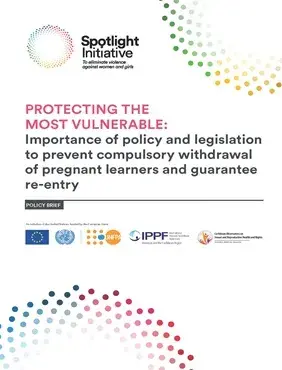Worldwide, one in five girls has given birth by the age of 18. In the poorest regions of the world, this figure rises to over one in three girls. Adolescent births are more likely to occur among the poor, less educated, rural and indigenous populations. In the Caribbean region, adolescent fertility is at 60.1 births per 1000, which is above the desired benchmark of 40 births per 1000. Teen pregnancy and early motherhood represent a cost of opportunity for women, given that they often have to interrupt or drop out of their formal education4, which compromises girls’ development opportunities.
Low levels of educational attainment and early childbearing affect girls’ life trajectories in profound ways.5 Girls who are married, have had children, or have dropped out of school early are more likely to have more children over their lifetime and earn less in adulthood. This makes it more likely that their household will live in poverty.6 A PAHO/WHO, UNICEF and UNFPA 2018 report found that in most countries, adolescent girls with no education or only primary education are up to four times more likely to get pregnant than girls with secondary or higher education. Low education attainment is a cause and a consequence of teenage pregnancy.8 Other consequences for women associated with a lack of educational attainment and early childbearing include higher risk of intimate partner violence and a lack of decision-making ability within the household.9 These girls are at higher risk of being disempowered in ways that deprive them of their basic rights. Adolescent pregnancy also hinders girls’ psychosocial development and is linked to poor health outcomes and higher risks of maternal mortality.10 In addition, their children are at higher risk for poor health and social outcomes.
A study commissioned by the Caribbean Community (CARICOM) in 200912 on the benefits of investing in youth revealed that…
- the average direct cost per adolescent mother in the region is approximately US$2,000 per year.
- in total, the costs of supporting adolescent mothers in the region amount to about 2.43% of its Gross Domestic Product (GDP). If the opportunity costs of adolescent girls not having the chance to fulfil their potential are added, the figure climbs to 12.3% of the region’s GDP


